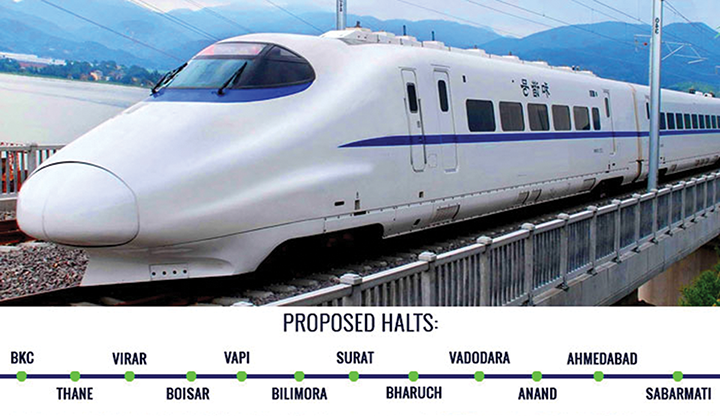Mumbai-Ahmedabad bullet train opting E5 Shinkansen technology

The Indian Railways and the National High-Speed Rail Corporation Limited (NHSRCL) has finalized the Japanese E5 Shinkansen technology for the implementation of 10 bullet train corridors with the total length of about 6,000 kilometers across the country. Out of these bullet train routes, six routes have already been identified for the high-speed train operation.
Nikhil Kumar Chakrobarty, Chief Public Relations Officer, Eastern Railway, told BE, “The Indian Railways has initiated plans to develop six high-speed train routes between New Delhi-Mumbai, New Delhi-Kolkata, New Delhi-Amritsar, New Delhi-Varanasi, Patna-Kolkata, and Chennai-Bengaluru. However, the planning is in the initial phases.”
Mumbai-Ahmedabad bullet train
The foundation stone of the first bullet train of the country, laid in 2017 linking Mumbai to Ahmedabad, is expected to be operational in 2023. As per government information, the train route will have total 12 railway stations namely Mumbai, Vapi, Thane, Boisar, Virar, Vadodara, Sabarmati, Anand, Bharuch, Surat, Bilimora and Ahmedabad.
The Mumbai-Ahmedabad bullet train which will have a corridor of 508.17 km, of which, 348.04 km will fall in Gujarat, 155.76 km will be in Maharashtra and 4.3 km will be through Dadra and Nagar Haveli. The initial maximum speed in service was planned to be around 300 km/h (186 mph) but later this was raised to 320 km/h (199 mph).
Technology
The Mumbai-Ahmedabad bullet train is being developed based on Japan’s E5 Shinkansen technology. According to the NHSRCL, Japan’s E5 Shinkansen series is famous for holding a zero-fatality record. The train features a long extension which stretches to 15 metres in the front. It prevents ‘tunnel boom’, which results from the structure of the tunnel, preventing the air around the train from escaping in all directions. It has a full compartment to cover and reduce the aerodynamic sound in the train. The inter-coach windshield region is considered as one of the main aerodynamic noise sources. According to NHSRCL, “The mechanical noise produced during the running is absorbed to a large extent by the equipment and sound absorbing materials mounted underneath. The train sets are preinstalled with low noise pantographs fitted with sound insulators on both sides and help in reducing the noise level.”
Shinkansen technology employs an Automatic Train Control (ATC) system, eliminating the need for trackside signals. It uses a comprehensive system of Automatic Train Protection (ATP). A centralised traffic control manages all train operations, and all tasks relating to train movement, track, station and schedule are networked and computerised. This technology restricts carbon emission.
High expenditure behind the project
Narendra Modi in his first term as the Indian Prime Minister had sanctioned a loan worth Rs. 88,000 crore at 0.1% interest rate from his Japanese counterpart Shinzo Abe for extending India’s ambitious bullet train project. The cost of Ahmedabad-Mumbai High Speed Rail Project is estimated to be around Rs. 1,10,000 crore. It is almost equal to the total capital expenditure of Indian Railways for the 2017 fiscal. This scale of expenditure for a route that only covers 500 km can become a burden for India. For a country which runs nearly 10,000 trains every day to carry more than 23 million passengers, a bullet train in India will carry only a few thousand people. The ticket price for the bullet train is also expected to be around Rs. 3,000 which is not quite reasonable and will be equivalent or around the airfare between these two cities.
Progress in Japan
Japan is far ahead in railway technology. In May, 2019, the country began to test the world’s fastest ever Shinkansen technology-based bullet trains, capable of a speed of 400 km/ph. Called the Alfa-X, the train is scheduled to be commissioned in 2030.
